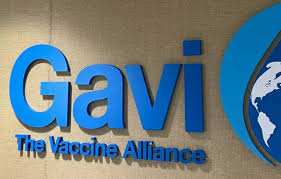
Gavi to vaccinate 500 million children globally by 2030
- Health and Wellbeing
- No Comment
- 422

Through this initiative, it aims to save 8-9 million lives, including 1.5 million through the human papillomavirus (HPV) vaccine.
Gavi, the Vaccine Alliance, has announced plans to vaccinate 500 million children globally by 2030 as part of its new five-year strategy, which outlines the organisation’s vision, mission, and objectives for that period.
This was revealed by the group on Monday through a post on X.
Through this initiative, it aims to save between eight and nine million children, adding that it will focus on introducing and scaling up vaccines to prevent endemic, epidemic, and pandemic diseases, including climate-sensitive ones such as dengue and tuberculosis.
Gavi stated that the UNICEF Executive Director, Catherine Russell, in a statement, said closing the immunisation gap requires a collective effort.
She said “Closing the immunisation gap requires a global effort, with governments, partners, and local leaders investing in primary healthcare and community workers to ensure every child gets vaccinated, and that overall healthcare is strengthened.”
Gavi’s objectives (2025-2030)
Earlier this year, Gavi launched its investment case, “Protecting Our Future,” outlining its strategy through 2030 and seeking $11.9 billion to achieve its plan.
To that effect, the group has received $2.4 billion in pledges, including a $1.58 billion commitment from the United States, representing an 8 per cent increase from its previous pledge.
A key component of Gavi’s plan is the African Vaccine Manufacturing Accelerator (AVMA), which aims to invest $1.2 billion to scale vaccine production in Africa. This initiative addresses the stark disparity in vaccine distribution, where Africa, accounting for nearly one-fifth of the global population, received only 6 per cent of COVID-19 vaccines produced by January 2022.
Gavi said its fundraising will culminate in a final pledging event in spring 2025, coinciding with the Global Fund to Fight AIDS, TB and Malaria’s replenishment. The success of these organisations is crucial for ensuring universal access to disease prevention and treatment, ultimately shaping the future of global health.
According to them, the strategy for 2025-2030 centres around three primary objectives, which aim to strengthen country-led vaccine programmes by supporting nations in optimising their vaccine portfolios and introducing new vaccines tailored to their local context and capacity.
The organisation also said it seeks to expand vaccine access, ensuring equitable and timely distribution to prevent outbreaks, epidemics, and pandemics.
Additionally, Gavi said it will enhance global health security by deepening engagement in responding to vaccine-preventable diseases and expanding global vaccine stockpiles.
Global response
Gavi, reflecting on history, stated that in the 1950s, a devastating smallpox outbreak swept across nearly 60 countries, prompting the World Health Organisation (WHO) to take action.
By 1980, smallpox became the first infectious disease to be eradicated, a monumental achievement that sparked a wave of optimism among global health advocates. They began to explore which other diseases could be tackled next.
It, however, stated that the 1980s saw a proliferation in vaccination efforts against diseases like polio and measles, but progress was short-lived. As populations grew, vaccines failed to keep pace, and equity issues led to uneven distribution, with some vaccines available in the Global North but not in the Global South – a problem also seen in the AIDS crisis.
In response, leaders from the public and philanthropic sectors convened at the 1990 World Summit for Children. Organisations like UNICEF, UNDP, The Rockefeller Foundation, the World Bank, and WHO launched the Children’s Vaccine Initiative, aiming to boost vaccine coverage, research, and supply coordination.
This partnership made significant strides in the next decade, focusing on diseases such as tuberculosis, polio, and measles.
In 2000, the children’s vaccine Initiative evolved into Gavi, the Vaccine Alliance, a movement dedicated to saving lives and protecting people’s health, especially children.
Gavi has since allocated approximately $23 billion to increase global immunisations in low- and middle-income countries, with support from donors, including the United Kingdom, Norway, the United States, and the Gates Foundation.
Gavi’s impact and challenges
The group has made remarkable strides in global health since its inception in 2000, vaccinating over 1 billion children in the world’s poorest countries and preventing more than 17.3 million deaths.
Its efforts focus on combating 20 diseases, including measles, human papillomavirus (HPV), and others.
According to them, it recently expanded its scope to address the intersection of climate change and global health, tackling waterborne diseases like cholera and animal-driven diseases like yellow fever and malaria that thrive in warmer climates.
It stated that in overcoming setbacks and closing the immunisation gap it has achieved notable successes, including steadily increasing HPV vaccine coverage since 2020, especially among girls.
However, COVID-19 posed a significant setback for immunisation coverage, resulting in 2.7 million more children being unvaccinated or undervaccinated compared to pre-pandemic levels in 2019.
Additionally, in 2022, over 14 million children missed life-saving DTP vaccines, and six million received only partial vaccination.
By Leshi James





